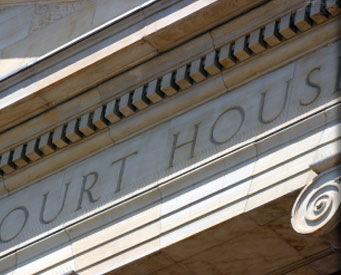Malicious Mischief
- Malicious Mischief in the First Degree
- Malicious Mischief in the Second Degree
- Malicious Mischief in the Third Degree
Malicious Mischief in the First Degree - RCW 9A.48.070.
- 1. A person is guilty of malicious mischief in the first degree if he or she knowingly and maliciously:
- a. Causes physical damage to the property of another in an amount exceeding five thousand dollars;
- b. Causes an interruption or impairment of service rendered to the public by physically damaging or tampering with an emergency vehicle or property of the state, a political subdivision thereof, or a public utility or mode of public transportation, power, or communication; or
- c. Causes an impairment of the safety, efficiency, or operation of an aircraft by physically damaging or tampering with the aircraft or aircraft equipment, fuel, lubricant, or parts.
- 2. Malicious mischief in the first degree is a class B felony.
MALICE and MALICIOUSLY mean an evil intent, wish, or design to vex, annoy, or injure another person. Malice may be, but is not required to be, inferred from an act done in willful disregard of the rights of another.
The SENTENCING RANGE for a felony offense is set by the legislature. The range accounts for the person’s criminal history, other current offenses and whether they were on under the supervision of the Department of Corrections. The person’s offender score will determine applicable range.
For a conviction of Malicious Mischief in the First Degree:
- An offender score of zero establishes a range of 0 to 3 months in jail.
- An offender score of nine establishes a range of 43 to 57 months in prison.
A first offense Firearm Enhancement would add 36 months on to the end of a standard range sentence.
A first offense Deadly Weapon enhancement would add 12 months on to the end of a standard range sentence.
Malicious Mischief in the Second Degree - RCW 9A.48.080.
- 1. A person is guilty of malicious mischief in the second degree if he or she knowingly and maliciously:
- a. Causes physical damage to the property of another in an amount exceeding seven hundred fifty dollars; or
- b. Creates a substantial risk of interruption or impairment of service rendered to the public, by physically damaging or tampering with an emergency vehicle or property of the state, a political subdivision thereof, or a public utility or mode of public transportation, power, or communication.
- 2. Malicious mischief in the second degree is a class C felony.
MALICE and MALICIOUSLY mean an evil intent, wish, or design to vex, annoy, or injure another person. Malice may be, but is not required to be, inferred from an act done in willful disregard of the rights of another.
The SENTENCING RANGE for a felony offense is set by the legislature. The range accounts for the person’s criminal history, other current offenses and whether they were on under the supervision of the Department of Corrections. The person’s offender score will determine applicable range.
For a conviction of Theft in the Second Degree:
- An offender score of zero establishes a range of 0 to 2 months in jail.
- An offender score of nine establishes a range of 22 to 29 months in prison.
A first offense Firearm Enhancement would add 18 months on to the end of a standard range sentence.
A first offense Deadly Weapon enhancement would add 6 months on to the end of a standard range sentence.
Malicious Mischief in the Third Degree - RCW 9A.48.090.
- 1. A person is guilty of malicious mischief in the third degree if he or she:
- a. Knowingly and maliciously causes physical damage to the property of another, under circumstances not amounting to malicious mischief in the first or second degree; or
- b. Writes, paints, or draws any inscription, figure, or mark of any type on any public or private building or other structure or any real or personal property owned by any other person unless the person has obtained the express permission of the owner or operator of the property, under circumstances not amounting to malicious mischief in the first or second degree.
- 2. Malicious mischief in the third degree is a gross misdemeanor.
MALICE and MALICIOUSLY mean an evil intent, wish, or design to vex, annoy, or injure another person. Malice may be, but is not required to be, inferred from an act done in willful disregard of the rights of another.
The maximum penalty for Malicious Mischief in the Third Degree is 365 days in jail and a $5000 fine. The sentencing judge is not required to impose a minimum sentence.
Tim@LearyDefense.com
206-382-2401
1111 Third Avenue, Suite 2230
Seattle, WA 98101




